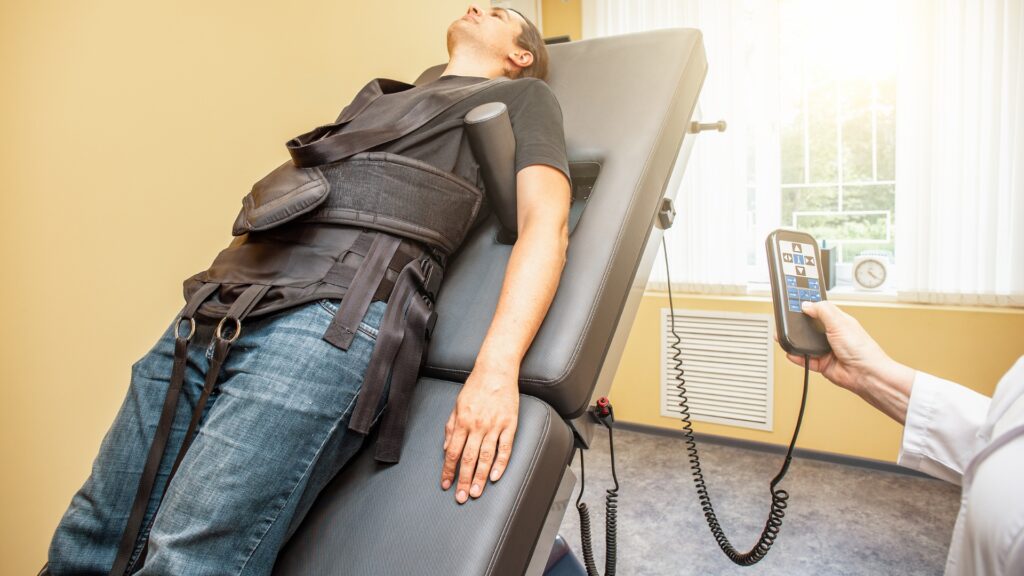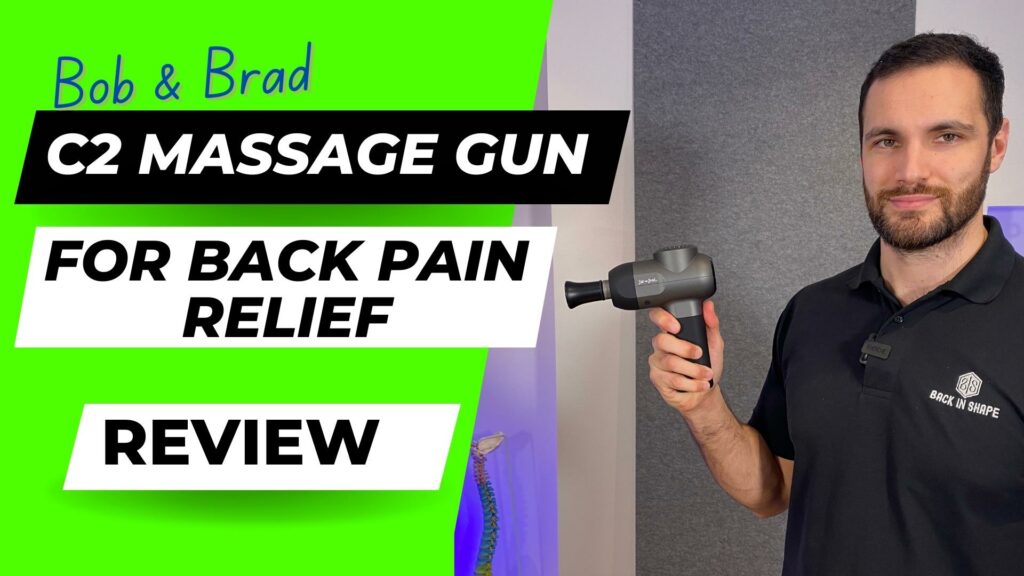
Spinal Decompression For Lower Back Pain
Spinal decompression is a topic that is something you’re going to come into contact with one way or another if you have back pain, or sciatica, at some point sooner or later. It is however a term that is used by many different professions, and even within professions to mean different things. Today we’ll explore our take on spinal decompression, why it is so important in the case of lower back pain and sciatica, as well as how it might be used in different environments to mean different actions.
Believe it or not spinal decompression is fundamentally quite simple, it is however the manner in which we choose to decompress the spine that makes all the difference.
Different types of spinal decompression
The different usages of the term spinal decompression can lead to so much confusion, we experience this first hand with members who’ve been told they’re having decompression and the action is fundamentally the opposite of what we would refer to as decompression.
Before we get any further, let’s provide a little clarity. Decompression fundamentally means to alleviate compression, undo a degree of compression. So for example, in the case of a spinal disc that is herniated, the forces of gravity provide compression, to reverse this by taking pressure off the vertebral body-disc junction would be decompression.
When we have a disc injury, bulge or herniation, we often find that it is creating compression on a nerve, perhaps leading to sciatica. In this scenario, you would perhaps be told to decompress the “spine” by doing a knee hug exercise, or some other flexion based exercise. In this circumstance, you would be making the hole where the nerve is compressed reduce the “pressure” – decompress – however, this would result in the compression of the vertebral body-disc junction in the process. Immediately we see that there is a bit of a conflict.
This is but one scenario as an example, the important question is:
What, specifically, are we decompressing? How are we decompressing this structure? And, what are the secondary consequences of this.
In the example above, we might be decompressing the specific nerve the disc is pressing on, as well as the exit foraminal space. We are doing it by a knee hug. The secondary consequence is that there is compression of the disc that is bulging in the first place.
It is important to understand that spinal decompression is not a sole solution, it must be done in concert with other modalities and education in order to “fix the problem”.
So what are some of the specific examples of spinal decompression?
Surgical decompression
In the medical world, as far as your GP or surgeon goes, the term decompression here would invariably involve removing some bone, or disc material that is putting pressure on sensitive structures. This removal has the effect of decompressing the area – creating more space, which is fundamentally how we decompress. It could also be the insertion of artificial discs in order to create more space and “decompress” the intervertebral segment.
IDD Therapy – mechanised non-invasive decompression
This is a medium in which traction is applied to the spine, lengthways. An oscillating force is then applied to create a pumping mechanism. In this case, the decompression would be unloading of the discs themselves, decompressing not only the intervertebral disc, but also enlarging the foramina too. Interestingly with IDD therapy, this is usually done whilst supporting the lumbar lordosis.
Adjustment decompression through manipulations
These could fall into two categories. The former would be a manual version of traction, done in a sustained manner or as a joint cavitation – the techniques that create an audible pop or click. This first category would be decompressing by unloading in a similar direction to the IDD Therapy example above, only with less precision and control. The secondary category would be certain flexion style adjustments which are designed with the purpose of decompressing the exit foramina. These focus primarily on the exit foramina although can also have an impact on the disc as well.
Exercises or stretches to decompress your back
These can vary tremendously, from flexion based knee hugs and child’s pose, which focus on decompression of the exit foramina. Then there are decompression options that include literally hanging from the door frame or a bar. These however are often done in ways that prove problematic and have costs that are not accounted for.
Our favourite decompression stretch at home
By far the best way for you to decompress your lower back in a gentle but thoughtful manner that is working with the structure of the spine is the use of the lower back towel. By doing this exercise, you can provide a decompression to the discs gently. At its core, decompression of the lower back should work on the discs as opposition to the loading strain of the lower back.
Review of spinal decompression
Fundamentally, the job of therapeutic spinal decompression is to oppose the leading cause of issues in the lower back, failure to deal with the load of gravity. Most reasonable decompression modalities will consider the structure of the lordosis of the lumbar spine when executing the therapeutic intervention. For example, in the case of IDD therapy, the presence of the bladder to support the lower back, in the case of the towel, the very action supports the normal and natural lordosis.
Often other therapeutic techniques fail to pay attention to the structure of the lumbar lordosis in their decompression techniques. It is important to remember, quite rightly, all decompression techniques are temporary modalities that work to execute an effect during the decompression but require repeat occurrences to continue the decompressive effect. The exception to the rule would be surgery, however as we’ll see shortly, that can also be of limited benefit if not done in tandem with other sensible practices.
Fundamentally, your spine is built to load bear, and the use of decompression is a temporary mechanism to offer momentary respite or a chance for tissues to receive better circulation for example. The challenge is to do your spinal decompression in a way that is not going to create unwanted issues. The problem with flexion based decompression approaches is the unwanted movements and issues they create by virtue of the movement being used. A better understanding of your own spine can make all the difference here in appreciating which forms of spinal decompression are better and safer, and which are ineffective, or even worse, contributing to the problem.
It’s not just about spinal decompression
Your spine will have required decompression because it is under or was under too much load. The thing you need to take away from this is that spinal decompression of the right sort can be a fantastic option, but it must be done in tandem with a program to build the supporting structures for your spine. In addition to this the right sort of movement patterns and postural habits that facilitate the process of having a functioning lumbar spine. We cannot eliminate the requirements for sitting or for load bearing from our modern lives. We can however employ simple decompression techniques, such as the towel, on a regular basis in the same way we brush our teeth twice a day. If done in conjunction with proper resistance training that is progressive, you’ll find yourself much better off, and you back pain a thing of the past.










Responses